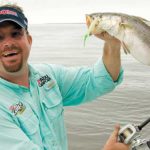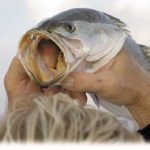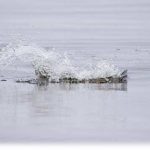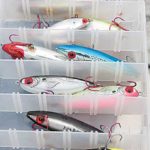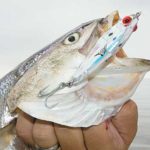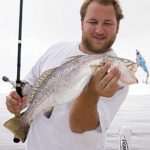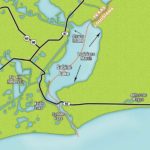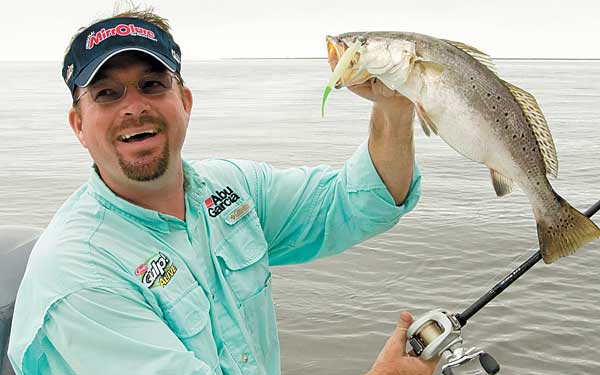
Sabine Lake receives very little pressure but is as productive as its neighbor to the east. Promise not to tell?
Extreme Southwest Louisiana has a secret that it doesn’t want you to tell. You see, while lines of anglers wait to launch their bay boats into the fertile waters of Calcasieu Lake, there is an equally productive lake not too far away where it’s more common to see a lonely loon than it is lots of loony anglers. In fact, Sabine Lake is probably more well-known to Texas anglers than it is to those in Louisiana, even though both states share the lake almost equally down the middle. And more seductive saltwater estuaries along their Gulf coast often distract even the Texas folks.
Sabine Lake might share a border with two of the most productive speckled trout states in the nation, but it’s almost as if nobody even knows about it. Louisiana anglers can’t see past Calcasieu Lake, and Texas anglers can’t see past Galveston Bay. Sabine Lake really is a perfect example of the old adage “out of sight, out of mind.”
One Texas angler who hasn’t lost sight of the fabulous trout fishing right out his back door at Port Arthur is Capt. Chris Phillips, who has operated Sabine Outdoors Fishing Charters at the lake for the past six years.
Phillips says the Sabine secret is starting to get out, though, because it’s impossible to keep this kind of trout fishing quiet for very long, especially with today’s information super highway.
“I would say that it used be a pretty good secret,” he said. “But I was discussing this with some of my buddies recently, and we all agreed that it was a lot quieter over here just five years ago. Back then you could go out on the lake any day of the week and see only a couple of boats. The pressure is starting to increase — you can see some boats on Monday and Tuesday, which should be the slowest days — but it’s still quieter than the surrounding fisheries.”
On the other side of the lake, Capt. Kent Carlson lives at Johnson Bayou, and he has been fishing Sabine for more than 25 years. Knowing that he has some stiff competition at Calcasieu Lake just up the road, Carlson wants anglers to know that the trout at Sabine Lake can go toe to toe with any fishery in either state.
“It may not rival Calcasieu in sheer size of trout — we don’t get those giant 8- and 9-pound fish too much — but there are a lot of quality fish in this lake,” he said. “The overall average size of these trout is really good, and the numbers are out there. All you’ve got to do is put them in the boat.”
Unlike Calcasieu, where anglers can find excellent trout fishing from north to south and east to west, Sabine Lake sets up a little differently. The way Phillips sees it, the best fishing is on the Louisiana side of the lake because that’s where the marsh is located.
“The Texas side isn’t much more than bank fishing,” he said. “I actually pick my customers up at the Causeway Boat Ramp on the Louisiana side, and we spend a lot of our time fishing that side.”
Being that the Texas/Louisiana border runs almost right down the middle of the lake, Phillips said there are some regulations that Louisiana anglers should be aware of before they launch their boats.
“Louisiana residents can fish anywhere in Sabine Lake with their Louisiana license,” he said. “The kicker is that if you put in on the Louisiana side, but you are fishing in Texas waters, you have to abide by the Texas regulations. That means you can only have 10 trout, which have to be a minimum of 15 inches long.
“But if you put in at a Louisiana ramp and are on the Louisiana side, you can abide by the Louisiana regulations.”
The problem is that there isn’t any big flashing marker that signals when anglers are crossing the border between the two states. According to Phillips, the best way to make sure where you are fishing is to purchase a good GPS and learn how to use it. Those that have the built-in maps should give an accurate display of where the border runs through the lake.
While the trout fishing is usually pretty good at Sabine throughout the summer, it really gets cranked up during October, according to Carlson. Early season cool fronts start pushing shrimp out of the Louisiana marsh, and they begin their migration out of Sabine and into the Gulf of Mexico.
“Once those shrimp get out into the middle of the lake, the birds will start working them over,” said Carlson. “The bird fishing will start up in the northern end of the lake, and it will move farther south later in October and on into November and December.”
Where the birds can be found working is generally dependent upon the speed and direction from which the wind is blowing. Calm weather means birds will pick shrimp all over the lake, and as a result trout can be caught all over the lake. Like fishing under the birds anywhere they are found, catching fish under the Sabine Lake birds is more a matter of quietly getting into position than throwing some kind of magic lure.
“I try to cut my motor about 100 to 150 yards out away from the birds when I arrive at the action,” said Phillips. “That can be a little tough sometimes when you see other boats running to the same birds because you want to get there before they do. Depending on the situation, I’ll either idle the rest of the way in with my big motor, or I’ll use my trolling motor to close the distance.”
Once in position, Phillips prefers to target the biggest trout available under the birds by either working the surface with a topwater or bumping the bottom with a heavy lead-head jig. According to Phillips, both of these techniques tend to help him bypass any of the short fish that may be feeding under the birds.
While admitting that just about anything will catch fish under the birds, Phillips says it’s hard to beat the topwater walkers, especially She Dogs. He says there’s something about the high-pitch sound this particular bait makes that drives the bigger fish crazy.
“Glow and the black with chartreuse nose are my two favorites,” he said. “The fact that you can cast these topwaters a really long way makes them even more ideal for fishing under the birds because you can stay back and not disturb the fish. Conditions have to be right for the topwater, though, so if it isn’t calm, I’ll have to switch to the soft plastic.”
Apparently, the smaller fish tend to get caught up somewhere in the middle because when Phillips fishes plastics on 1/4-ounce jigheads, he tends to catch the short fish. However, changing to a 3/8-ounce head gets him back into the keepers.
“I guess using that heavier head gets it down to the bottom quicker,” Phillips surmised. “Maybe the big fish are laying down there below the smaller fish. Who knows? But I can tell you that the heavier jig and the topwater are the two best ways to catch the bigger fish under the birds.”
When he switches to the plastics, Phillips typically threads on either a glow/chartreuse or purple/chartreuse Stanley Wedgetail minnow. Rather than swim the Wedgetails under the birds, Phillips prefers to bump the bottom, hop it a couple times, and let it settle back down.
Whereas Phillips likes the vibrating action of the Wedgtails under the birds, Carlson says he has always believed in the allure of straight-tail soft plastics like the Sand Eels and the Old Bayside Saltwater Shadlyn, which looks much like the Zoom Super Fluke.
“I’m not sure why these trout key in on this kind of profile,” said Carlson. “Perhaps they look like the real sand eels that the bigger fish seem to like so much. Just like any other plastic you can throw, simply rig them on a lead head jig, and bounce them along the bottom under the birds.”
When the birds first begin picking over the shrimp, Phillips says anglers can catch their limits with one bunch of fish as long as they don’t do anything to drive the birds and fish away. The key is to stay off to the side of the birds to keep your boat from drifting right into the middle of the fray.
“The later in the fall we get, the harder it will be to get the fish to hold,” he said. “That’s because the longer they get hit, the more likely they are go do down when the pressure starts. Later in the season, you may have to move around more to stay on the bite, but that shouldn’t be the case in early October.”
Anglers fishing the birds out in the open lake who aren’t familiar with Sabine will be surprised to discover that the bottom over which they are fishing is typically nothing more than a mud flat that remains a pretty consistent 6 to 8 feet deep. That means trying to figure out exactly where the trout will hold is more an exercise in happenstance than it is keying in on a flat, reef or drop-off.
“That is unless you’re fishing the southern end of the lake,” Phillips said. “That end is known as The Reef, and it’s basically just one big oyster reef. There are a few reefs scattered throughout the lake, but they are few and far between when compared to the southern section of Sabine.”
Another feature that anglers might want to take note of in the southern end of the lake is the Ship Channel that connects Sabine Lake with the Gulf of Mexico. Like the Calcasieu Ship Channel, this is basically the only way for fish to travel in and out of the main lake. In fact, Carlson often prefers to fish this channel because of the funneling effect it has on the fish.
“That means the fish will be concentrated more in the Ship Channel,” he said. “It’s just a straight shot from the lake to the Gulf of Mexico, and I would say it’s about 6 or 7 miles long. If you can find them in the channel, you can usually work on them pretty good. There are plenty of places up and down that area that will hold fish. Depending on the day, you can catch them on anything from topwaters to the bottom-bumping soft plastics.”
Being that Sabine is very similar to Calcasieu with its wide-open exposure to the wind, Phillips says a northeast wind over about 10 or 15 will rip up the lake too much to fish it effectively. In that case, he recommends scratching a trip and waiting for a better day.
“What’s a better day?” he asked. “The obviously best day to fish during October would have to be a dead-calm, flat day. Besides that, any mild wind that creates just a little bit of ripple on the water isn’t that bad. But when it gets to blowing out of the northeast, you might as well find something else to do.”
While Phillips may scratch the windiest days, he did suggest there is some respite for anglers who don’t want to put their fishing plans on hold. When the wind is howling from the north, there are a few islands in the northern part of the lake that would effectively become the lee side of the lake.
“Get up there around some of the islands like Bird Island, Stewts Island and any of those other islands up there,” he advised. “And those aren’t just good spots to get out of the wind. You should be able to get under some birds, or at least on some fish, up there.”
While it’s getting harder and harder for Sabine Lake anglers to maintain their poker faces, the simple fact is it’s hard for this lake to keep bluffing everybody with so many information avenues today.
I’m glad Phillips and Carlson let me in on their little Sabine Lake secret. Of course I had to promise them that I wouldn’t tell. Their Sabine secret is safe with me!
Contact Capt. Chris Phillips at www.sabineoutdoors.com or (409) 719-7166. Contact Capt. Kent Carlson at www.kandjlodge.com or (409) 460-1819.
